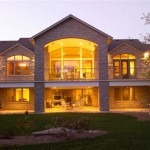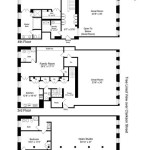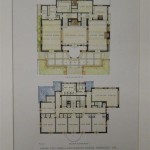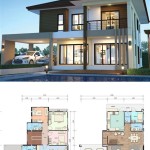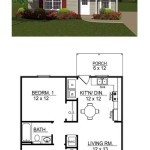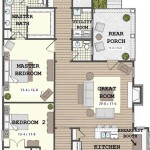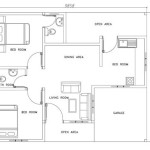Small Single Story Cottage House Plans: A Guide to Cozy Living
Small single-story cottage house plans offer a unique blend of charm, affordability, and practicality. These designs are increasingly popular among individuals seeking a simpler lifestyle, downsizing, or building a vacation home. This article explores the various aspects of small single-story cottage house plans, from their defining characteristics to design considerations and advantages.
Cottage-style homes are typically characterized by their cozy and inviting atmosphere. Architectural features often include steeply pitched roofs, exposed rafters, dormer windows, and charming front porches. These elements contribute to the picturesque and romantic aesthetic associated with cottage living. The single-story design adds to the accessibility and ease of maintenance, making them a practical choice for various lifestyles.
When considering small single-story cottage house plans, size is a crucial factor. "Small" can be subjective, but generally refers to homes under 1,500 square feet. This compact footprint contributes to the affordability of these homes, both in terms of initial construction costs and ongoing maintenance expenses. Smaller spaces require less material and labor to build, and utility costs are typically lower due to reduced heating and cooling needs.
Choosing the right floor plan is essential for maximizing functionality within a limited space. Open-concept layouts are a popular choice, creating a sense of spaciousness by combining living, dining, and kitchen areas. This design promotes natural light flow and facilitates social interaction. Careful consideration should be given to the placement of bedrooms and bathrooms to ensure privacy and efficient use of space.
Several popular architectural styles lend themselves well to small single-story cottage designs. Cape Cod cottages feature symmetrical facades, steep roofs, and dormer windows, often incorporating shingle siding for a classic New England look. Bungalow-style cottages emphasize horizontal lines, low-pitched roofs, and large front porches, creating a relaxed and informal ambiance. Craftsman cottages showcase handcrafted details, exposed beams, and natural materials, offering a warm and inviting aesthetic.
Customizing a pre-designed plan or working with an architect to create a custom design allows individuals to tailor the cottage to their specific needs and preferences. Considerations might include the number of bedrooms and bathrooms, the inclusion of a home office or dedicated hobby space, and features that enhance accessibility, such as wider doorways and grab bars.
Building materials play a significant role in the overall aesthetic and cost of the project. Traditional cottages often utilize wood siding, stone, and brick. Modern interpretations may incorporate more contemporary materials such as fiber cement siding or metal roofing. Choosing sustainable and energy-efficient materials can contribute to long-term cost savings and reduce the environmental impact of the building.
Incorporating outdoor living spaces is a key element of cottage living. Porches, patios, and decks extend the living area and provide opportunities for relaxation and entertainment. Landscaping can enhance the curb appeal and create a welcoming environment. Consider incorporating native plants and drought-tolerant landscaping to minimize maintenance and conserve water.
The advantages of small single-story cottage house plans are numerous. Their compact size translates to lower construction and maintenance costs. Single-story living eliminates the need for stairs, enhancing accessibility and simplifying daily life. The cozy atmosphere and charming aesthetic contribute to a comfortable and inviting living environment. Furthermore, smaller homes often encourage a more intentional and minimalist lifestyle.
Choosing a location for a small cottage involves considering factors such as proximity to amenities, access to transportation, and the surrounding environment. Rural settings offer tranquility and privacy, while suburban locations provide access to community resources and conveniences. Understanding local building codes and zoning regulations is essential before finalizing any building plans.
Budgeting for a small cottage project requires careful planning and consideration. Factors influencing the overall cost include the size and complexity of the design, the chosen building materials, and labor costs. Obtaining accurate cost estimates from contractors is essential for effective budget management. Exploring financing options and securing pre-approval for a mortgage can streamline the building process.
The resurgence in popularity of small single-story cottage house plans reflects a growing desire for simpler, more manageable, and affordable living. Careful consideration of design, materials, and location allows individuals to create a cozy and functional home that meets their individual needs and preferences. These charming dwellings offer a unique blend of practicality and aesthetic appeal, making them an attractive option for a variety of homeowners.

44 Village Home Ideas House Design Plans Small

1 Bedroom Single Story Cottage With Open Living Space Floor Plan Pool House Plans Tiny

27 Adorable Free Tiny House Floor Plans Craft Mart

Open Concept Two Bedroom Small House Plan Other Examples At This Link Plans Tiny Floor Sims

Single Story 2 Bedroom Storybook Cottage Home With Garage Floor Plan Style House Plans

10 Small House Plans With Open Floor Blog Homeplans Com

One Story House Plans With Open Floor By Max Fulbright

Plan Small Cottage Homes 2 Bedroom Single Story With Screened Porch Davidreed Co In 2024 Sims House Plans Blueprints

78 Single Story Cottage Style House Plans

Best One Story House Plans And Ranch Style Designs

